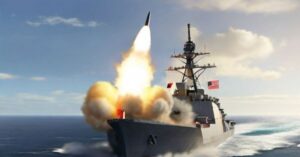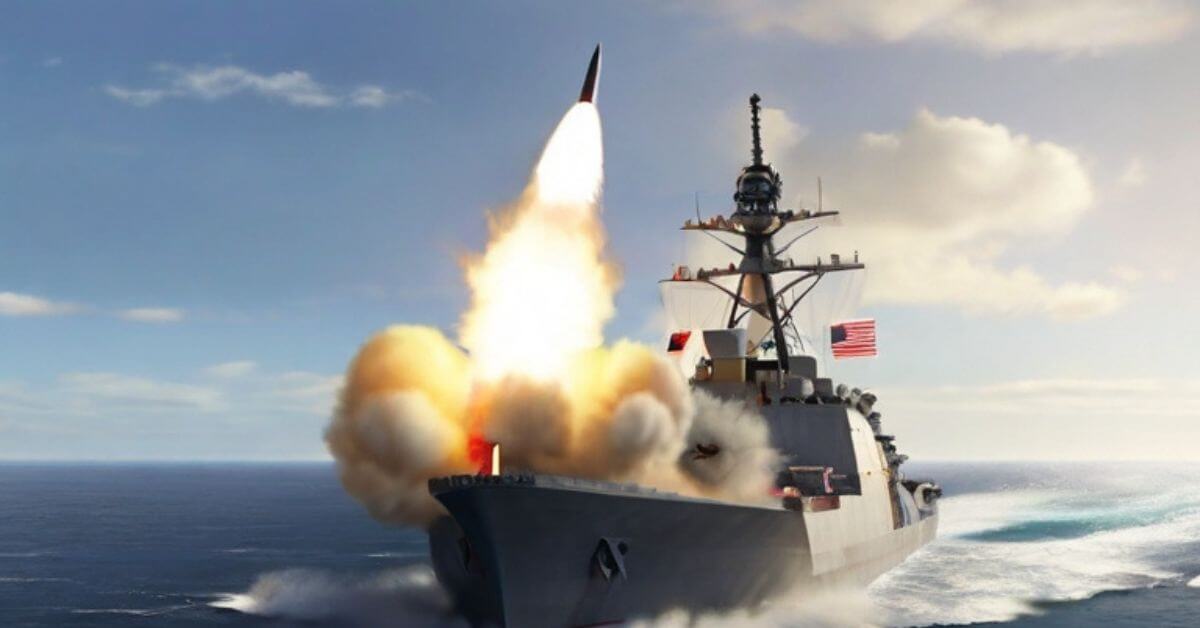
Greece Becomes 1st European Nation To Ban Bottom Trawling In Marine Parks & Protected Areas
April 17, 2024
U.S Navy Fired $1 billion In Missiles To Counter Iran & Houthis In Middle East, Says Navy Secretary
April 17, 2024

For the first time on 14 April 2024, the US Navy Arleigh Burke-class missile destroyers deployed Standard Missile-3 interceptors to counter an Iranian ballistic missile attack on Israel.
The operation in the Eastern Mediterranean involved the USS Carney (DDG-64) and USS Arleigh Burke (DDG-51), which fired four to seven SM-3s to intercept Iran’s ballistIran’ssiles.
As confirmed by defence sector sources, this marks the first-ever combat use of SM-3 interceptors.
The Israel Defense Force mentioned that Iran fired 350 missiles and drones targeting Israel.
These were loaded with 60 tons of explosives. The assault comprised nearly 30 cruise missiles, 120 ballistic missiles, and 170 drones.
The IDF reported that 99% of these were intercepted before entering Israeli airspace.
Reports also indicate that the launches originated from Iran, Iraq and Yemen.
It is unclear which factions are responsible for these launches from the mentioned locations.
Fox News and CNN reported that the American destroyers intercepted at least four ballistic missiles in the operation.
The SM-3 interceptors, specifically designed to strike ballistic missiles, including the ICBMs outside the atmosphere during the mid-course stage, are prepared with kill vehicles that collide physically with the target and destroy it.
The Carney and Arleigh Burke is equipped with the Aegis Ballistic Missile Defense System (BMD), managed by the Missile Defense Agency (MDA) in partnership with the US Navy.
The system includes elements at sea and on land.
The destroyers of the Arleigh Burke class and the Ticonderoga class cruisers are specially configured.
The Aegis Ashore installations in Poland and Romania are also there.
The SPY-1D radar on vessels guided the SM-3s to target the ballistic missiles close to the apex of the trajectory before they re-entered the atmosphere to hit the target.
Currently, the USS Burke is part of the contingent of American destroyers stationed at Rota, while the USS Carney was previously based there as part of this mission.
BMD destroyers and cruisers also patrol near South Korea and Japan, delivering a defence against potential North Korea’s powerful ballistic missile attacks.
The SM-6, yet another interceptor in the Aegis BMD system, made a combat debut recently in the Red Sea region to safeguard military and commercial vessels from ballistic and cruise missiles and drones launched by Houthi militants in Yemen.
The SM-6 is designed to engage threats in the terminal flight stage.
The type of ballistic missiles Iran deployed remains unidentified, but pictures indicate that the Emad medium-range missiles could be among the ones they used.
The Standard Missile-3 is an anti-ballistic missile primarily used by the US Navy to thwart short- and intermediate-range ballistic missiles.
A part of the Aegis Ballistic Missile Defense System, the SM-3 is launched from vessels equipped with the Aegis combat system and is compatible with the Aegis Ashore sites.
It performs in the mid-course phase with a kinetic warhead to destroy its targets with direct impact through a “hit-to-kill” method.
The SM-3 has experienced many upgrades, with the Block IIA variant capable of employing ICBMs.
Its operational range is up to 2,500 km, and it can reach altitudes of more than 150 kilometres, delivering comprehensive defensive coverage against missile threats.
The Arleigh Burke and Carney are guided-missile destroyers of the Arleigh-Burke class fitted with the Aegis Combat System, which combines the ship’s sensors and weapons to combat anti-aircraft threats.
This system incorporates the AN/SPY-1 radar, a powerful phased-array radar that can track over 100 targets simultaneously.
Their weapons include SM-2 and SM-3 missiles for air and ballistic missile defence, Tomahawk cruise missiles for long-range strikes, and Evolved SeaSparrow Missiles for surface-to-air defence.
The destroyers are designed to offer multi-layered defence against various threats and are valuable assets in maritime security missions.
Reference: Navy Recognition
U.S Navy Warships Fire SM-3 Missiles For the First Time To Shoot Down Iranian Missiles appeared first on Marine Insight – The Maritime Industry Guide
Source: Maritime Shipping News


